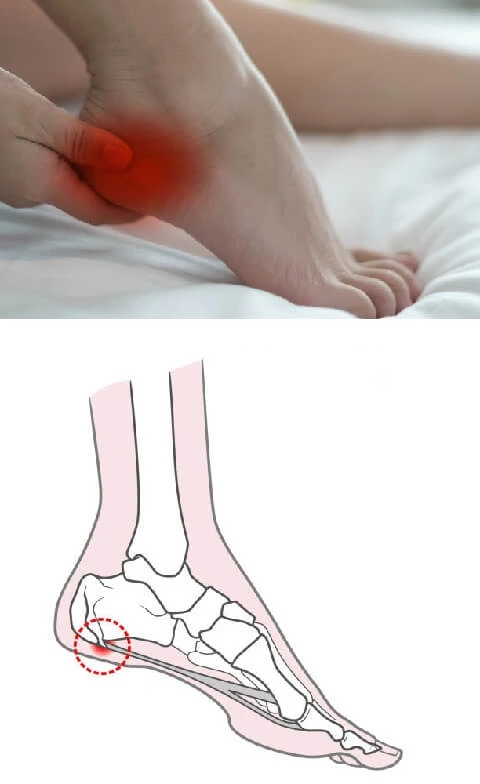Heel spurs, also known as calcaneal spurs, are bony protrusions that develop on the underside of the heel bone. They are often associated with plantar fasciitis, a condition that causes inflammation of the plantar fascia, the thick band of tissue that runs along the bottom of the foot and connects the heel bone to the toes.
Causes of Heel Spurs
Heel spurs can occur as a result of repetitive stress on the heel bone, such as from running, jumping, or wearing poorly fitting shoes. Other factors that can contribute to their development include:
- Overuse or excessive pressure on the heel bone
- Flat feet or high arches
- Age-related wear and tear on the heel bone
- Being overweight or obese
Symptoms and Problems Caused by Heel Spurs
Heel spurs often do not cause any symptoms on their own. However, they can cause pain and discomfort when they irritate or press on the surrounding soft tissue, including the plantar fascia. This can result in symptoms such as:
- Pain and tenderness in the heel, particularly when walking or standing for long periods of time

- A dull ache in the heel that worsens with activity
- Swelling and redness in the affected area
- Difficulty or inability to bear weight on the affected foot
If left untreated, heel spurs can lead to chronic pain and difficulty walking, which can significantly impact an individual’s quality of life.
Treatment Options for Heel Spurs
There are several treatment options for heel spurs, including:
- Rest and ice: Reducing activity and applying ice to the affected area can help reduce inflammation and alleviate pain.
- Orthotic devices: Custom-made shoe inserts can help redistribute pressure on the foot and provide additional support.
- Physical therapy: Stretching and strengthening exercises can help alleviate pain and improve range of motion.
- Medications: Over-the-counter pain relievers such as ibuprofen and naproxen can help reduce pain and inflammation.
- Surgery: In severe cases, surgery may be necessary to remove the heel spur.
Why Typical Chiropractic Care is an Effective Option for Heel Spurs
Typical chiropractic care can be a highly effective option for treating heel spurs. Chiropractors are trained to identify and treat musculoskeletal issues, including those that affect the feet and ankles. Some of the benefits of chiropractic care for heel spurs include:
- Reduced pain: Chiropractic adjustments can help alleviate pain and discomfort associated with heel spurs by realigning the foot and ankle.
- Improved range of motion: Chiropractic care can help improve flexibility and range of motion in the foot and ankle, which can help reduce strain on the heel bone and surrounding tissue.
- Minimal side effects: Unlike some medications and surgical procedures, chiropractic care has few if any side effects and is considered a safe and non-invasive treatment option.
- Cost-effective: Chiropractic care is often less expensive than other treatment options, making it an accessible option for many individuals.
Chiropractic Care Utilizing Zone Technique for Heel Spurs
Any Zone Technique healer, including Dr. Post, knows exactly what to do for any condition walking into the office, including heel spurs. Since Zone Technique is able to unlock and unleash the powerful healing ability withing your body, your healing results will be significantly better than any other healing technique available today. Whether you have or someone else you know has heel spurs, balancing the body by utilizing Zone Technique will heal your body on a very deep level. In fact, when the body heals in this way, the biomechanics will improve drastically and the heel spur can and usually disappears over a relatively short amount of time. Zone Technique healing is natural, effective, and permanent so that you will heal completely, function great and no longer have pain. You can be totally healthy again – feeling great and functioning perfectly from head to toe every day of the year!
If you don’t live close enough to see Dr. Post, search for a certified Zone Technique healer closer to you by searching the ZONE TECHNIQUE PRACTITIONER DIRECTORY. You owe it to yourself to take action so that you can heal and feel awesome again.
Conclusion
Heel spurs can cause significant discomfort and impact an individual’s quality of life, but there are several treatment options available. Chiropractic care utilizing the Zone Technique is the safest, most effective and very cost-effective option for fixing heel spurs quickly and reducing pain, and improving range of motion. If you are experiencing heel pain, consult with us to determine the best course of treatment for your specific needs.

